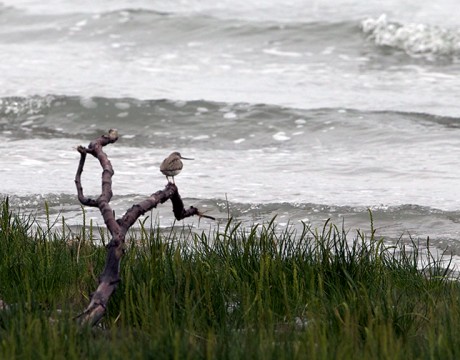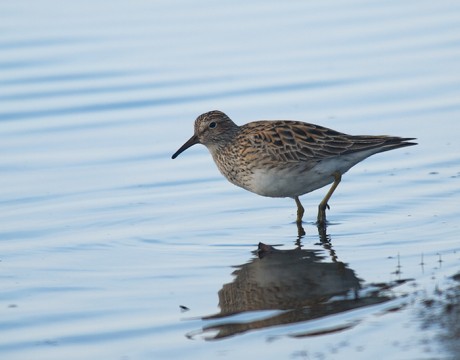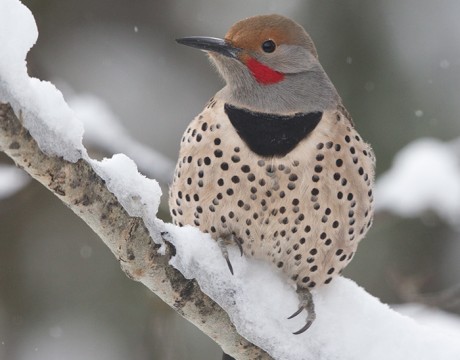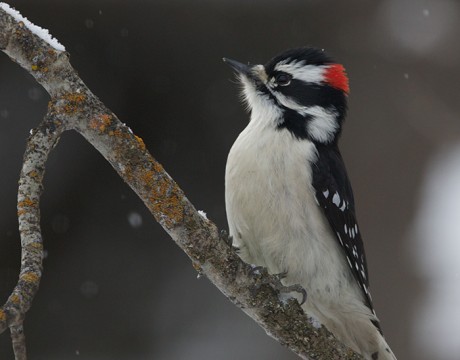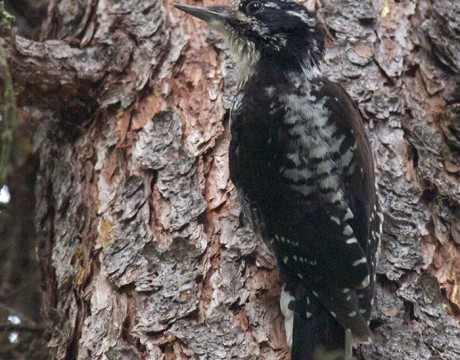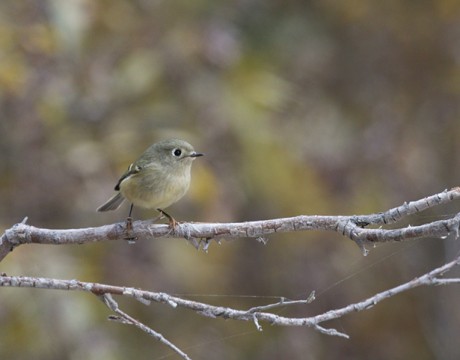Missing Uncle Ted
I’ve been nostalgic for the great political patron saint of Alaska — Ted Stevens. Lord, how I miss that Incredible Hulk tie and his fearlessness. Oh, it’s not like I’ve forgotten the arguments he and I got into. But we didn’t question each other’s love of country or state. With Russia making bold motions toward the United States this week — planes buzzing our destroyer in the Black Sea, a spy ship patrolling within 30 miles of the coast of Connecticut — and the installation of illegal missiles around their country, I feel nervous. I haven’t dug a bunker yet,…
Bird of the Week – Terek’s Sandpiper
WC’s Bird of the Week feature is reaching the end of WC’s photo list of Alaska birds. Three of the next four birds are Eurasian species that WC was lucky enough to photograph. The first is a Terek’s Sandpiper, which appeared in Anchorage a couple of years ago. Note the distinctive long, up-turned bill on this species. You can’t see if clearly in this photo but the legs are yellow-orange. Terek’s are a Eurasian species, “casual” in Alaska, a birding term that means you see them once in a blue moon. As you might imagine, there were hordes of birders of…
Calling the Mosquito Fleet
My darling Alaskans, I am starting to feel like these columns I write are more like letters to the people and place I love. It is blowing sideways on the bay today and the snow, defying gravity and all rules, seems to be traveling upward while accumulating on the ground at the same time. My ermine friend is shrew hunting — which is my favorite thing about him — and has learned to do a trick or two for cheese bits. I’m watching with one eye the mushers vie for position in the Yukon Quest and with the other, the…
Bird of the Week – Baird’s Sandpiper
WC overlooked a sandpiper species when working through the long list of sandpipers that breed in Alaska: Baird’s Sandpiper. Baird’s move through the southern two-thirds of the state en route to their high arctic breeding range. Like the Pectoral Sandpiper, the darker feathers end half way down the chest, but tend to fade out, rather than a sharp transition. But you can tell them apart by the black legs, in contrast to the yellow legs of a Pectoral. One of the most remarkable characteristics of Baird’s is that it makes one of the largest metabolic investments in egg production known in…
Bird of the Week – Northern Flicker
The Northern Flicker is Alaska’s most colorful woodpecker. If the others are variations on black and white, with maybe a touch of color, the Northern Flicker broke the mold. This photo isn’t from Alaska; it’s from Central Idaho, but WC includes it because it captures the remarkable color and patterns of this extravagant bird. Here’s a photo from Alaska. Unlike the other woodpeckers posted, this one is primarly a ground-forager, a woodpecker that doesn’t peck wood. Although it does drum to establish territories and does forage on trees from time to time. The taxonomy of Flickers is . . ….
Storm on the Horizon
I said last week I would try to focus more on affairs of the state, you know, because the whole world has seemingly lost their collective minds. I’ve spent some time watching Gavel to Gavel and listening to assembly meetings so you don’t have to. It may seem like a small thing to many of you, but clearly you haven’t spent an hour screaming at your computer because of local political antics. You’re welcome. Pro tip: Be careful if you’re playing a drinking game that requires a shot when the words “body” or “member” are said. In the big square…
Bird of the Week – Downy Woodpecker
Continuing with woodpeckers, this is Alaska’s smallest woodpecker, and probably the most common year round. In many ways, the Downy is a smaller version of the Hairy, with similar patterning. But the Downy is much smaller, and has a proportionately smaller bill. The male has the red barring on the back of his head shown here. The female does not. Interior Alaska, where these birds were photographed, is near the northerly limits for this species, but the range of Downys is huge. In fact, they are found in all 49 continental states and all of the Canadian provinces. Like Hairy…
Make Alaska Great Again
Maybe you were too busy this week trying to stay warm to follow the news much. There have been some new developments. I know. They almost got past me, you know with keeping the snow shoveled out of the outhouse and enough water melted to do a few dishes. I’m trying hard to keep up. A major oil discovery was announced this week! Wahoo! “Initial technical estimates indicate the discovery could have recoverable resource potential in excess of 300 million barrels of oil,” ConocoPhillips said. That’s awesome for all of Alaska, right? I mean, jobs, jobs, jobs and we can…
Bird of the Week – American Three-toed Woodpecker
We’ll go back to woodpeckers for a while. The American Three-toed Woodpecker is a medium-sized black-and-white woodpecker. The male has a small yellow patch on his forehead. The feet do indeed have only three toes, instead of the more common four: 2 forward and 1 backward. (The Black-backed Woodpecker has the same configuration.) The Three-toed can be a difficult bird to find. Unlike other woodpeckers, it doesn’t drill. Instead, it flakes off pieces of spruce bark to get to insects. It prefers spruce bark beetles, but is otherwise a generalist. Three-toeds will drum to establish territory, often picking a dead…
Bird of the Week – Ruby-crowned Kinglet
The smallest songbird in the New World boreal forest is the Ruby-crowned Kinglet. The red spot on the species’ head is only present in males and even then not all the time. Even ithout the red spot, the broken white eye ring, two white wingbars and incredible hyperactivity make this a pretty easy bird to identify in the field. If you can keep your binoculars on it as it frenetically jumps around. For a tiny bird, this little kinglet has an amazingly loud and long song. It’s a wonderful sign of spring. For more bird photos, please visit Frozen Feather Images.






